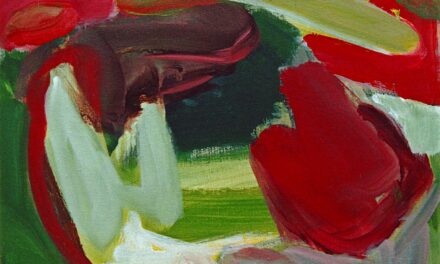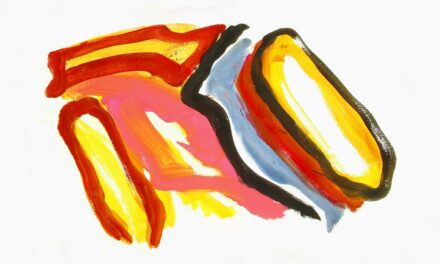Thomas Jefferson was born on 13 April 1743, in Shadwell, Virginia, to a prominent family of planters. He was the third of ten children and was raised in a privileged environment. His father, Peter Jefferson, was a successful planter and surveyor, whilst his mother, Jane Randolph, came from a well-respected Virginia family.
Jefferson received his early education from private tutors and subsequently attended the College of William and Mary in Williamsburg, where he studied law and philosophy. He was an avid reader and had a keen interest in classical literature and philosophy, which would later influence his political and architectural pursuits. Jefferson’s education was heavily influenced by the Enlightenment, a period of intellectual and philosophical growth in Europe and America.
He was particularly inspired by the works of John Locke, Francis Bacon, and Isaac Newton, whose ideas about natural law, reason, and individual rights would shape his political beliefs. Jefferson’s early exposure to these ideas would later inform his drafting of the Declaration of Independence and his advocacy for democratic principles. His education also included a deep appreciation for classical architecture and design, which would become evident in his later architectural projects, such as the design of his home at Monticello.
Summary
- Born and raised in a middle-class family in London, the artist showed an early talent for drawing and painting.
- After studying at the Royal Academy of Arts, the artist gained recognition for their skill and unique style, leading to commissions from wealthy patrons.
- The artist’s neoclassical style was characterised by a focus on classical themes, clean lines, and a sense of harmony and order.
- The artist became involved in revolutionary activities, using their art to express political and social commentary, which led to their exile from their home country.
- During their time in exile, the artist continued to produce significant works, and upon their return, they continued to influence and inspire future artistic movements with their innovative approach.
Rise to Prominence
Early Political Career and the Continental Congress
In 1775, he was elected to the Continental Congress, where he played a crucial role in drafting the Declaration of Independence. His eloquent writing and passionate advocacy for independence made him a prominent figure in the American Revolution.
Rise to Prominence and Leadership Roles
Jefferson’s rise to prominence continued after the Revolution, as he served as the Governor of Virginia from 1779 to 1781. Despite facing challenges during his tenure, including the invasion of Virginia by British forces, Jefferson’s leadership and resilience earned him respect and admiration.
Diplomatic Career and Cultural Influences
In 1784, he was appointed as the Minister to France, where he further honed his diplomatic skills and developed a deep appreciation for European art and culture. His experiences in France would later influence his architectural and artistic pursuits, as he sought to incorporate European influences into American design.
Neoclassical Style

One of Jefferson’s most enduring legacies is his contribution to the neoclassical architectural style in America. Inspired by his experiences in France and his admiration for classical architecture, Jefferson sought to incorporate classical elements into American design. His most famous architectural achievement is the design of his home at Monticello, which reflects his passion for classical proportions, symmetry, and harmony.
The building’s iconic dome and porticoes are reminiscent of ancient Roman and Greek architecture, showcasing Jefferson’s commitment to blending European influences with American sensibilities. In addition to Monticello, Jefferson’s neoclassical influence can be seen in other notable buildings, such as the Virginia State Capitol and the University of Virginia. His designs emphasised the use of classical orders, such as Doric, Ionic, and Corinthian columns, as well as geometric shapes and balanced proportions.
Jefferson’s neoclassical style represented a departure from the prevailing Georgian architecture of the time and set a new standard for American design. His commitment to blending classical elements with practical functionality has left an indelible mark on American architecture and continues to inspire architects and designers to this day.
Revolutionary Involvement
Jefferson’s involvement in the American Revolution was instrumental in shaping the course of American history. As a member of the Continental Congress, he played a pivotal role in drafting the Declaration of Independence, which outlined the colonies’ grievances against British rule and asserted their right to self-governance. Jefferson’s eloquent prose and impassioned defence of individual rights made the Declaration a powerful statement of American ideals and values.
His belief in natural rights and the sovereignty of the people laid the foundation for American democracy and continues to resonate with people around the world. In addition to his role in drafting the Declaration of Independence, Jefferson also contributed to the revolutionary cause as a diplomat and statesman. His diplomatic mission to France helped secure crucial support for the American colonies from the French government, which proved vital to their success in the war.
Jefferson’s commitment to securing international alliances and promoting American interests abroad demonstrated his strategic acumen and dedication to the revolutionary cause. His contributions to the war effort solidified his reputation as a visionary leader and patriot.
Exile and Return
Despite his many accomplishments, Jefferson faced challenges and setbacks throughout his career. One of the most difficult periods in his life came during his time as Governor of Virginia, when he was forced to flee from advancing British forces during the Revolutionary War. His tenure as governor was marked by hardship and adversity, as he struggled to defend Virginia from British incursions while facing criticism from his political opponents.
Ultimately, Jefferson’s decision to retreat from Richmond in the face of overwhelming British forces led to his temporary exile from public life. However, Jefferson’s exile was short-lived, as he soon returned to public service with renewed vigour and determination. In 1784, he embarked on a diplomatic mission to France, where he played a crucial role in securing support for the American colonies from the French government.
His successful efforts in France helped bolster American morale and strengthen their position in the war. Upon his return to America, Jefferson continued to serve his country with distinction, eventually becoming the third President of the United States in 1801. His resilience in the face of adversity and his unwavering commitment to the revolutionary cause cemented his legacy as a founding father of America.
Later Works and Legacy

Advocating for Individual Rights and Democracy
In addition to his educational initiatives, Jefferson continued to advocate for individual rights and democratic principles through his writings and correspondence. Jefferson’s legacy extends beyond his political achievements to encompass his contributions to American culture and intellectual life.
A Lasting Impact on American Society
His commitment to promoting knowledge and enlightenment has had a lasting impact on American society and continues to inspire scholars and thinkers around the world. Jefferson’s legacy is also evident in his architectural designs, which have influenced generations of architects and designers.
A Timeless Legacy in Architecture
His neoclassical style has left an indelible mark on American architecture and continues to be celebrated for its timeless elegance and grace.
Influence on Artistic Movements
Thomas Jefferson’s influence on artistic movements extends beyond architecture to encompass a wide range of artistic disciplines. His passion for classical literature and philosophy inspired him to support the arts throughout his career, leading to significant contributions to American cultural life. Jefferson’s patronage of the arts helped foster a vibrant artistic community in America during the early years of the republic.
His support for artists, writers, and musicians contributed to the development of a uniquely American artistic identity that continues to thrive today. In addition to his patronage of the arts, Jefferson’s neoclassical architectural style has had a profound impact on artistic movements in America. His emphasis on classical proportions, symmetry, and harmony has influenced not only architecture but also painting, sculpture, and decorative arts.
The enduring appeal of neoclassical design can be seen in numerous artistic movements throughout American history, including the Federal style of architecture in the early 19th century and the Beaux-Arts movement in the late 19th century. Jefferson’s commitment to blending European influences with American sensibilities has helped shape the trajectory of American art and design for centuries. In conclusion, Thomas Jefferson’s multifaceted legacy encompasses his contributions to politics, architecture, education, and the arts.
His early life and education laid the foundation for his intellectual pursuits and political beliefs, which would shape American democracy for generations to come. His neoclassical architectural style has left an indelible mark on American design, while his patronage of the arts has fostered a rich artistic tradition in America. Jefferson’s influence on artistic movements continues to resonate with artists and designers today, reflecting his enduring impact on American culture and society.
If you are interested in learning more about the art movements that followed the neoclassical style of Jacques-Louis David, you may want to read the article on impressionism. This article explores the revolutionary style of painting that emerged in the 19th century, challenging the traditional techniques and subject matter of the art world. You can find more information on impressionism here.
FAQs
Who was Jacques-Louis David?
Jacques-Louis David was a French Neoclassical painter, born on August 30, 1748, in Paris, France. He is considered one of the most prominent artists of his time and is known for his historical and revolutionary paintings.
What are some of Jacques-Louis David’s most famous works?
Some of Jacques-Louis David’s most famous works include “The Death of Socrates,” “The Oath of the Horatii,” “The Coronation of Napoleon,” and “The Death of Marat.”
What is Neoclassicism?
Neoclassicism is an art movement that emerged in the 18th century, characterized by a revival of classical forms and themes from ancient Greece and Rome. Neoclassical artists aimed to depict noble and heroic subjects in a clear and rational style.
What impact did Jacques-Louis David have on the art world?
Jacques-Louis David had a significant impact on the art world, particularly through his role in the French Revolution and his influence on Neoclassical art. His paintings were highly influential and helped shape the artistic and political landscape of his time.
What was Jacques-Louis David’s political involvement?
Jacques-Louis David was an active supporter of the French Revolution and became closely involved with the revolutionary government. He used his art to promote revolutionary ideals and was a member of the radical Jacobin faction.
What was Jacques-Louis David’s legacy?
Jacques-Louis David’s legacy is that of a revolutionary artist who played a significant role in the political and artistic movements of his time. His work continues to be studied and admired for its technical skill and its reflection of the political and social climate of the late 18th and early 19th centuries.




